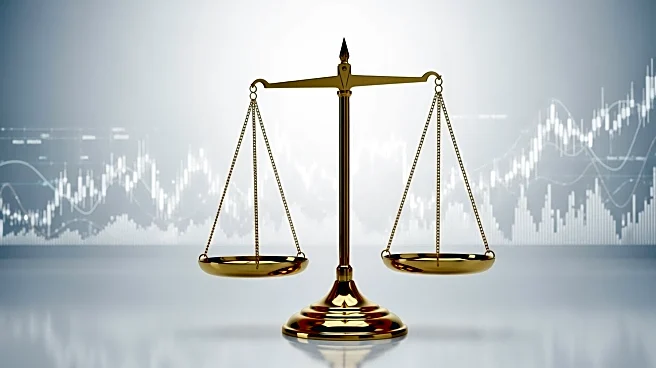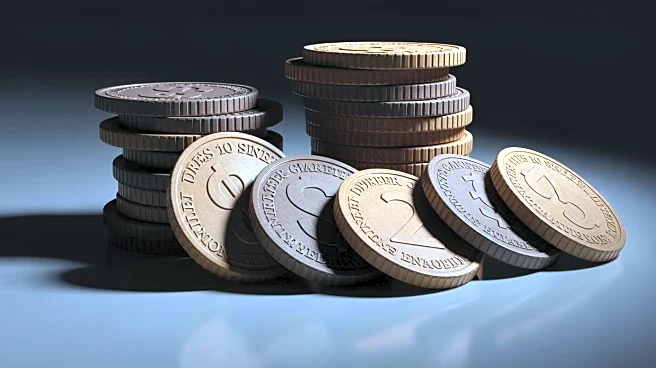What's Happening?
The Bureau of Labor Statistics reported a significant rise in the U.S. producer price index (PPI) for July, with a 0.9% increase from the previous month. This marks the largest monthly gain since June
2022, pushing the annual rate to 3.3%, which is well above the Federal Reserve's 2% target. The increase was primarily driven by a rise in service costs, including trade services margins and portfolio management fees, as well as a notable spike in fresh and dry vegetable prices. Economists had anticipated a smaller 0.2% increase, following a flat reading in June. The unexpected surge in wholesale prices is being closely monitored by advisors and investors, as it may indicate a forthcoming rise in consumer prices, exacerbated by the impact of tariffs.
Why It's Important?
The unexpected rise in wholesale inflation poses a challenge for the Federal Reserve as it considers its monetary policy. The increase in the PPI suggests that businesses may soon pass on higher costs to consumers, potentially leading to increased consumer inflation. This development complicates the Federal Reserve's decision-making process regarding interest rates, as it balances the need to control inflation with the desire to support economic growth. The rise in wholesale prices also reflects ongoing tariff pressures, which have been a significant factor in the cost increases. If businesses begin to pass these costs onto consumers, it could lead to higher consumer prices, affecting purchasing power and economic stability.
What's Next?
The Federal Reserve is expected to closely monitor upcoming inflation and employment data as it prepares for its September meeting. The recent PPI data may influence the Fed's decision on whether to hold or cut interest rates. Market expectations for a rate cut have decreased following the PPI report, although the Fed is likely to continue its cautious approach, considering the broader economic context. Businesses and consumers alike will be watching for any signs of cost pass-through from tariffs, which could further impact inflation and economic conditions.











